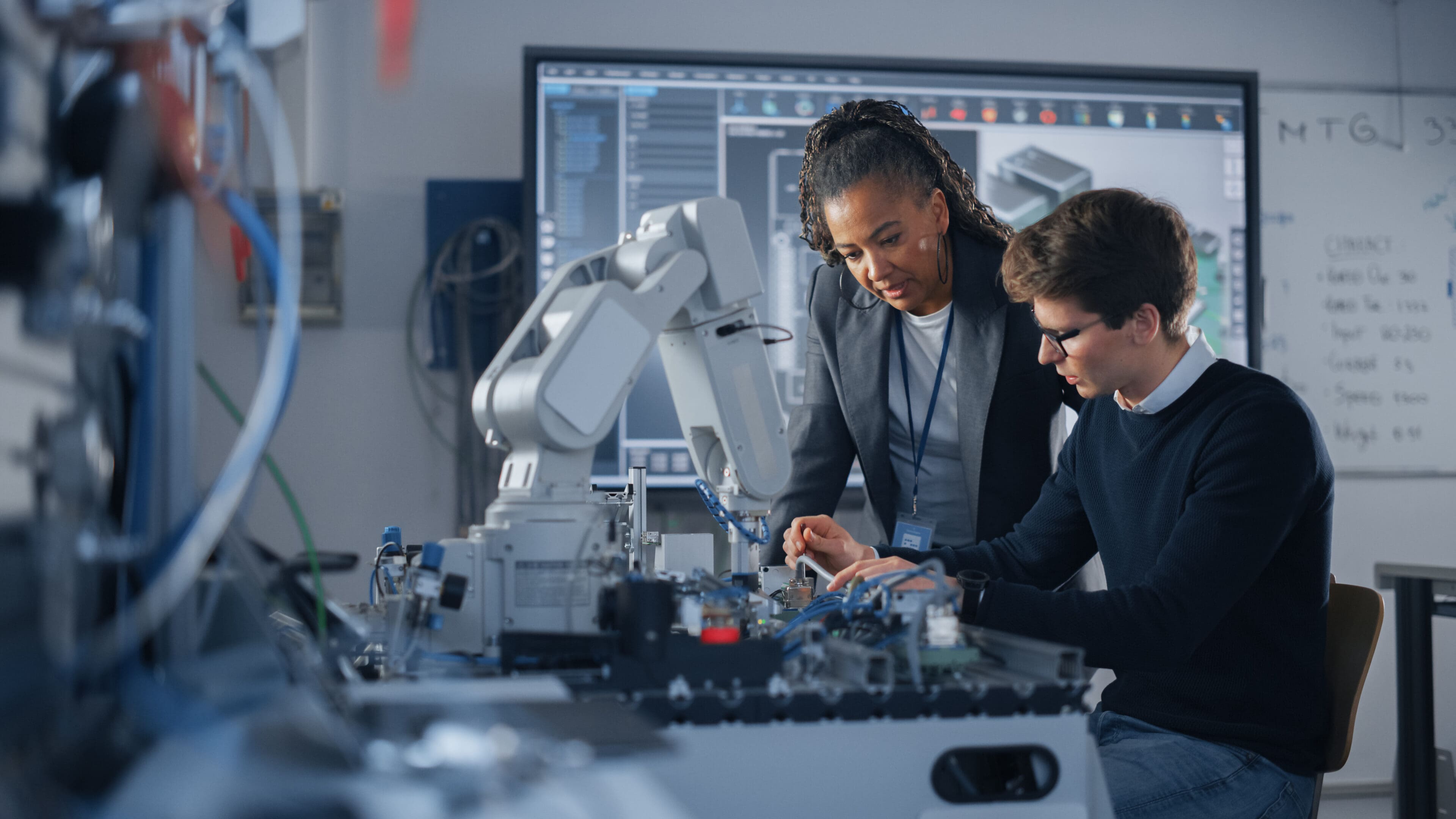
Maximizing Efficiency: A Step-by-Step Guide to Smart Automation
In today’s manufacturing landscape, terms like Industry 4.0 and Smart Manufacturing are frequently mentioned by technology vendors, while methodologies such as Lean Manufacturing, Just-in-Time (JIT), and Six Sigma are commonly advocated by efficiency consultants. However, these strategies cannot be uniformly applied across all industries; they must be tailored to a company’s specific operations to avoid hindering production in the pursuit of efficiency.
Significant losses in both time and money often result from implementing automation technology without a comprehensive system evaluation. Introducing new technology without considering the entire system is akin to adding whale lungs to a human body, despite their capacity, the necessary supporting structures are absent, leading to an underutilized or even detrimental addition. This scenario can become a recurring issue within a company.
The notion that “technology will fix the problem” is pervasive in the manufacturing industry. Expecting technology to resolve all issues without first analyzing the company structure is like a doctor performing surgery without prior testing. While it may occasionally work, mistakes and costs will accumulate over time. A thorough assessment of the company is essential before adding automation to prevent unnecessary purchases that may slow operations or fail to increase throughput, thereby delaying return on investment (ROI).
This assessment process, though less thrilling than deploying new machinery, provides a detailed understanding of your business, facilitating effective automation steps that genuinely enhance efficiency.
Step 1: Define Production Goals
Begin by determining the desired increase in product output. While infinite production is ideal, it’s crucial to ensure there is both market demand and the capacity to sell more. Given that most companies have multiple revenue streams, identifying which stream’s growth would be most beneficial is important.
Step 2: Engage with Floor Personnel
Visit the production floor and discuss workflows with both supervisors and workers. These individuals, involved in daily operations, often have valuable insights into floor issues, delays, and potential solutions. Sometimes, problems can be resolved with simple, low-cost options. For instance, at KIE Solution, we encountered a company that unnecessarily moved products to three different locations before processing, adding time and occasionally leading to forgotten products. The solution was straightforward: streamline the process by directing parts to a single location for subsequent utilization. No automation was needed.
Often, however, the identified problems are more complex. The following steps will help pinpoint these issues and assess their impact on production.
Step 3: Conduct Time Studies
Time studies are comprehensive methods to analyze your production process. There are two essential types:
- Component Tracking: Monitors individual components from entry to exit in the factory.
- Station Tracking: Records the time each product spends at every station.
Despite the time and effort required, skipping this step is a mistake. The data obtained offers profound insights into factory processes and provides timelines useful for future product quoting. Conducting a time study is manageable if employees participate in the tracking process.
Utilizing tools provided by KIE Solution, can simplify this process. Data can be collected and then analyzed to find the most efficient way to increase throughput.
Component Tracking:
For Component Tracking begin by assign a tracking number and form to each component or batch upon “entry” into the factory. Deciding whether to use a batch tracking number or individual tracking number depends on how much the batch will stay together or whether it will be broken apart. Having a general idea ahead of time makes the tracking numbers the most useful for later data correlation. Whenever an employee interacts with the component, they should record the time and date, their name, and the component’s end location. If a component is divided, assign sub-numbers and new forms to each part. When components are combined, create a new tracking number and form. This method provides a comprehensive history of each item’s location and duration at each stage.
Station Tracking:
For Station tracking the beginning process begins the same but utilized for each station, a similar forms is used to record the start time and date, the operator’s name, and the part number being processed. This approach offers insights into machine utilization and the specific tasks performed.

After data collection, KIE Solution can assist in analyzing and presenting the information graphically, identifying bottlenecks, and proposing solutions with predictive modeling. In simple terms, the data from Station Tracking and Component Tracking is overlaid together to give a comprehensive representation of the parts as they go pass through the factory. Alternatively, you can compile the data into spreadsheets to create visual representations. Visual aids are invaluable for understanding time utilization and communicating findings.
Step 4: Collaborate with Floor Personnel Again
With a detailed analysis in hand, revisit discussions with floor personnel, especially those directly involved with identified bottlenecks. It’s crucial to recognize that issues often stem from machines, processes, or regulations rather than personnel. Your goal remains investigative: trace problems to their source without assigning blame or hastily adding automation. Floor staff can help to provide direction based on the data.
Step 5: Model Potential Changes
Before implementing changes, model their potential impact. Will the proposed upgrade resolve the issue or create downstream problems? KIE Solution uses tools and time study data to predict outcomes, ensuring maximum ROI from new automation or process adjustments.
Step 6: Creating Buy-In
Final step is creating buy-in with the workers on the floor. Creating buy-in with the workers on the floor is critical for the successful implementation of automation. It starts with clear communication about how the automation will improve their workflow, reduce repetitive tasks, and enhance overall efficiency. Involving workers early in the process by seeking their input and addressing their concerns fosters a sense of ownership and trust. Providing hands-on training and demonstrating how the automation will make their jobs easier, not replace them, helps to ease resistance. It’s important to remember that even though the machine will make life for the workers easier and help to increase throughput of product, that becomes irrelevant if the workers don’t want to utilized the automation to its fullest potential.
The belief that technology alone is the solution can lead companies astray by obscuring the bigger picture. Gathering information and developing targeted solutions, rather than simply adding automation, is more likely to address problems effectively and provide the best automation tailored to your factory’s needs.

Implementing automation without proper planning can lead to significant financial losses. A study by Ernst & Young found that 30% to 50% of robotic process automation projects fail globally. Conversely, conducting thorough time studies can lead to substantial improvements. Businesses that implement automation can see up to 48% improvement in productivity and a 42% decrease in operating costs.
KIE Solution stands out in the automation industry by prioritizing a holistic, data-driven approach tailored to each client’s unique operations. Unlike integrators who may advocate for automation as a one-size-fits-all solution, KIE begins by thoroughly assessing your entire system to identify inefficiencies and bottlenecks. This involves using the step described in this article in combination with specialized tools that we utlized to ensure that any automation implemented genuinely enhances productivity and ROI.
For a more in-depth, step-by-step guide to implementing smart automation, KIE Solution offers a free copy of Failure to Automate, providing valuable insights into optimizing your manufacturing processes.
Ready to transform your operations? Contact KIE Solution today to discuss how their customized automation strategies can drive efficiency and growth for your business .
